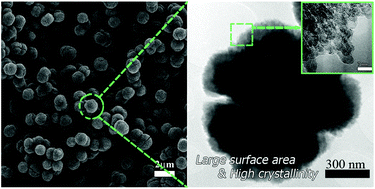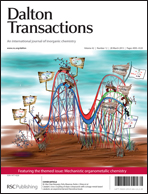Controlled synthesis and Li-electroactivity of rutile TiO2 nanostructure with walnut-like morphology†
Abstract
Herein, we report on the synthesis of phase-pure rutile walnut-like TiO2 (W–TiO2) spheres composed of single-crystalline nanorod-building blocks using a surfactant-free non-aqueous acidic modified “benzyl alcohol route”. Based on the various HCl concentration- and reaction time-dependent experiments, an effect of hydrochloric acid on the phase formation mechanism in a non-aqueous system is suggested. As anodes for Li-ion batteries, the W–TiO2 sphere electrodes exhibited superior cycling performance at a rate of 0.2 C without any conducting layers coated onto the anodes; this result is attributed to their high crystallinity and large surface area.


 Please wait while we load your content...
Please wait while we load your content...